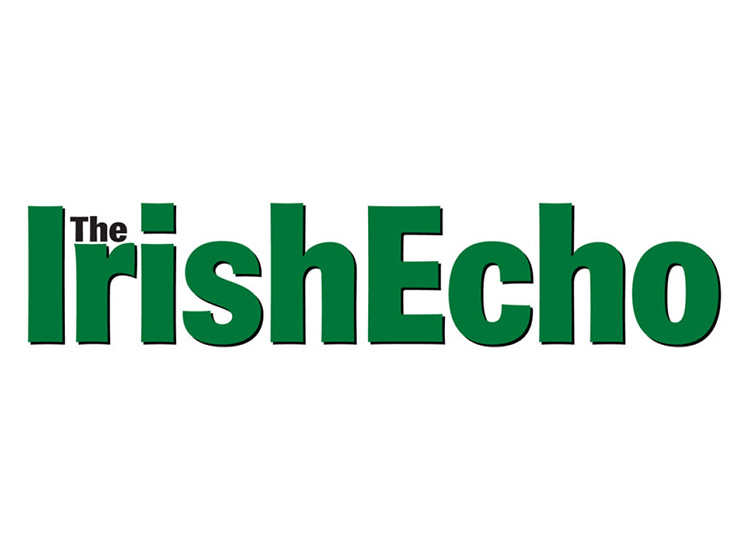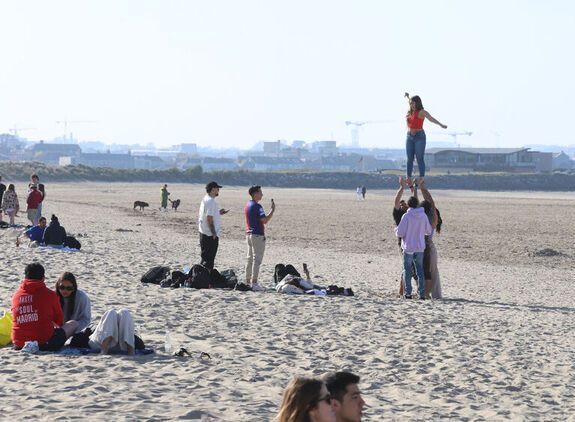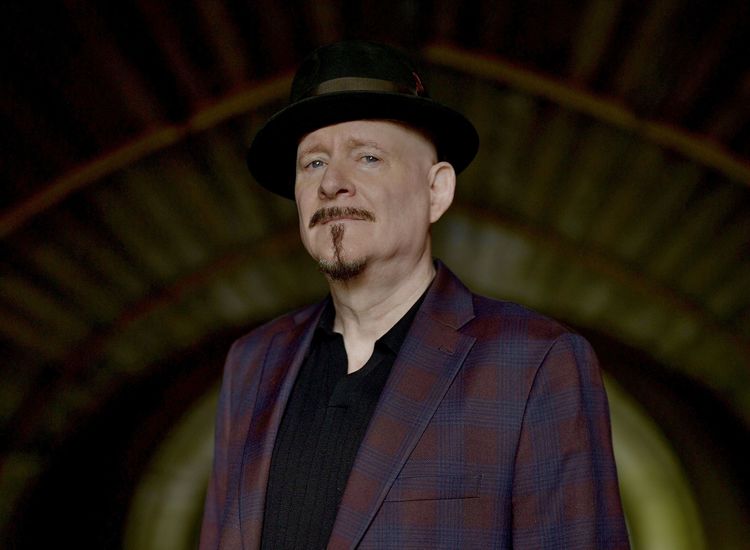By John McCarthy
The recent election in Ireland marks the first time that Fine Gael won the largest number of Dáil seats. During all the six times the party had previously been in power, it was as the senior member of coalition governments. Each time Fianna Fáil, in opposition, had remained the largest party. That explains why those coalition governments all had only a single term.
Before predicting the survival of the new Fine Gael-led coalition, it might be appropriate to look at party's history and actual experience in government.
The party, whose name means "The Family of the Gaels", came into being in 1933 following the failure of the Cumann na nGaedheal Party in two successive national elections. It was an amalgamation of Cumann na nGaedheal (the governing party in the Irish Free State from 1922 to 1932), the Centre Party (primarily the old parliamentary nationalist party), and the National Guard.
The last named group, originally named the Army Comrades Association, consisted of former army officers who were apprehensive of retaliatory action by the Fianna Fáil government that, at least in its early stages, seemed especially tolerant of the IRA. The same anxiety prompted the members to act as a protective force for meetings of Cumann na nGaedheal during which they wore identifying "Blueshirts", for which practice they were nicknamed.
The first leader of the party was General Eoin O'Duffy , deputy chief of staff in the IRA in the War of Independence, Chief of Staff in the Free State Army in the Civil War, and Commissioner of the newly formed Garda Siochana in the Free State. When dismissed by de Valera from that post 1933, he became leader of the Army Comrades Association.
O'Duffy's extremist political style and the deplorable performance by Fine Gael in early 1934 local government elections resulted in his replacement as leader of Fine Gael by William T. Cosgrave, who had presided over the Irish Free State for the first decade of the nation's independence.
For the next decade, Cosgrave led an opposition that saw its ranks diminishing as de Valera consolidated his position among the small farmer, the worker, and increasingly the propertied, especially newer entrepreneurs taking advantage of strong protectionist policies.
He was succeeded as party leader in 1943 by Richard Mulcahy, the Chief of Staff of the IRA during the War of Independence, and Minister for Defense in the Free State Government during the Civil War.
A February 1948 election resulted in a curious coalition government of anti-Fianna Fáil groups including Fine Gael, the Labour Party, a more conservative National Labour Party, a small farmers' party, Clann na Talmhan, and a new radical party, Clann na Poblachta, led by the former IRA Chief of Staff, Sean MacBride. This coalition advanced a socially radical and nationalist program by constitutional means.
Embittered memories from the Civil War made Mulcahy unacceptable as Taoiseach to Clann naPoblachta. The position was taken by John A. Costello, a barrister who had been attorney general in the Cumann na nGaedheal government.
The government included such Cumann na nGaedheal stalwarts as Patrick J.McGilligan as Minister for Finance, Seán MacEoin as Minister for Justice, and Mulcahy as Minister for Education. Sean MacBride became Minister for Foreign Affairs.
The short-lived government of three years was memorable for two issues. In late 1948, Costello announced his intention to introduce legislation to withdraw from the British Commonwealth.
At the time, Irish diplomatic credentials had to be endorsed by the king as head of the Commonwealth. That last link was removed when Ireland was declared a republic on Easter Monday, 1949.
The other memorable issue was the Mother and Child controversy. Legislation was proposed by Dr. Noel Browne, minister for health, to provide non-means tested obstetrical and pediatric care. The Catholic hierarchy objected from concern over state intrusion on familial matters involving specific moral issues.
The medical profession also opposed the measure from fear of a reduction in their income for such services. The entire cabinet, including MacBride, washed their hands of Browne and his proposal. Costello was uninhibited in indicating his willingness to abide by the direction of the hierarchy.
Secession from support of the coalition government by three independents caused the government's fall. De Valera returned to power in the June 1951 election, even though his party had gained only one seat, while Fine Gael gained nine.
Further gains by Fine Gael and a reunited Labour Party brought the coalition back into power in 1954. Costello was again taoiseach. Liam Cosgrave, the son of the former party leader, became foreign minister and directed Ireland's entrance into the United Nations and its subsequent activist role in that body.
The 1950s were a period of economic stagnation for Ireland, regardless of who was in power. However, the coalition governments did have some innovative programs such as the Industrial Development Authority. But more characteristic of the era was the government retrenchment and fiscal rigidity.
The second coalition employed internment in response to the IRA armed campaign that began in 1956. Although the government was successful in curbing that campaign, Sinn Féin won five seats and Fianna Fáil gained an absolute majority in a 1957 election.
The leader of Fine Gael from 1959 to 1965 was John Dillon. He was the son of the Home Rule Party figure, John Dillon, and grandson of the Young Irelander, John Blake Dillon, and had served as minister for agriculture. He had left the party during World War II because of criticism of his advocacy of neutral Ireland's joining the Allies.
Liam Cosgrave succeeded as party leader in 1965 and led a coalition government with Labour that was elected in 1973. That government included such luminaries as the relatively young Garret FitzGerald, son of a Cumann na nGaedheal minister, Desmond FitzGerald, as minister for foreign affairs; Richard Ryan as minister for finance, and Conor Cruise O'Brien (Labour) as minister for posts and telegraphs.
While Cosgrave was socially and economically conservative, his government included a Young Turk element in Fine Gael espousing a program of social justice. The government was mainly taken up with an economic downturn and an intensified Northern Ireland crisis.
An interesting by-election at this time was the return in November 1975 of a young teacher from County Mayo named Enda Kenny, who took the seat held by his deceased father.
One of the most memorable achievements of this government was its negotiating the short-lived Sunningdale Agreement in 1973, the first effort at power sharing in Northern Ireland. This, along with the subsequent Hillsborough Agreement, negotiated by another Fine Gael-Labour coalition government in 1985, emphasized the necessity for cross community consent for any political settlement for Northern Ireland.
In addition to the Sunningdale negotiations, foreign minister Garrett FitzGerald was a central figure in the new role Ireland came to play in the European Common Market, which she had joined the year before the formation of the coalition government.
Economic problems and utopian promises by Fianna Fáil - an Irish version of supply side economics - defeated the coalition in the 1977 election. Cosgrave's place as Fine Gael leader was taken by Garret FitzGerald.
Coming to power briefly during the hunger strikes in 1981, a FitzGerald led coalition with Labour was forced out by an independent's objection to taxation on children's shoes. Only a few months later, they were returned to power following a similar dissent by other independents from a measure advanced by Fianna Fáil taoiseach, Charles Haughey.
That second FitzGerald-led coalition lasted until a February 1987 election, when economic doldrums, including high emigration for the first time since the 1950s, and severe fiscal imbalance due to the pressure of their over generous Labour coalition partner, brought Fianna Fáil back to power.
The last time Fine Gael led a coalition government was in 1994 to 1997. For the only time in Irish history, a government was formed that was not the result of an election. Labour withdrawal from a coalition with Fianna Fáil, formed after the 1992 election, resulted in a lack of a majority for the government.
Labour then joined a new coalition with Fine Gael and the Democratic Left, a breakaway from the Workers Party, previously known as Official Sinn Féin.
The taoiseach in what would be nicknamed the Rainbow Coalition was John Bruton. Previously a minister for finance, Bruton had taken over the leadership of Fine Gael in 1990 from Alan Dukes, the successor to FitzGerald. Dukes lost some favor in the party with his "Tallaght Strategy" of cooperating with the economic program of Charles Haughey, who was implementing the essential cutbacks on programs he had early advocated.
As taoiseach, Bruton had to give leeway to his lef twing partners, as free third level education began and a constitutional amendment permitting divorce was narrowly passed. The coalition greatly reduced corporate taxes, balanced the budget, and jump started a strong economic recovery.
However, the coalition lost the 1997 election because Labour's presence in the Dáil was almost halved, even though Fine Gael numbers had increased by nine, the same as Fianna Fáil.
The new Fine Gael-Labour coalition differs from all the earlier ones in that each partner has more votes than Fianna Fáil, who, even though having only twenty seats, will be the leading opposition party.
Even in the unlikely eventuality of its combining with such other opposition groups like Sinn Féin (14 seats) and some of the 19 other diversely-minded deputies, Fianna Fáil offers no danger to the coalition.
The greatest danger would come from division within the coalition itself, especially as differences in principle might eventually prove stronger than the attractions of office.









